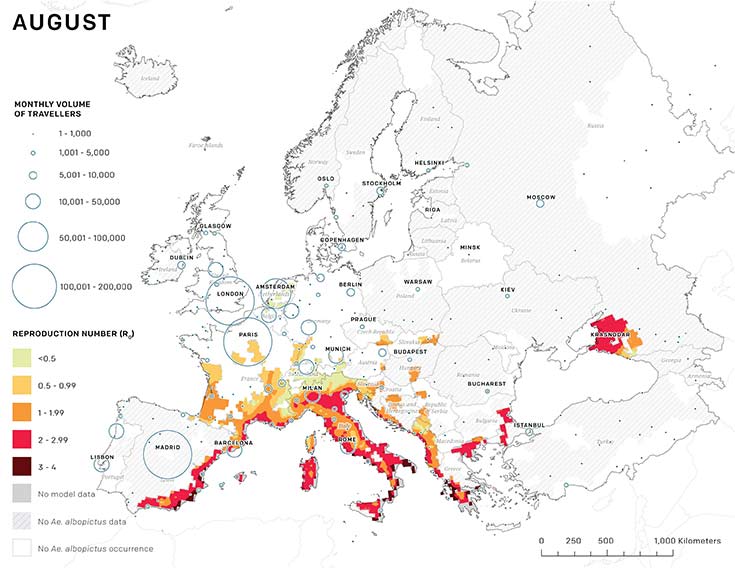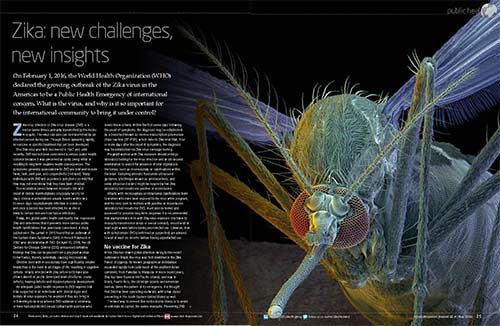Risk of Zika to Southern Europe
An analysis of temperatures, vectorial capacity, basic reproductive number (R0), and air traveller flows suggests parts of Southern Europe may be at risk for Zika outbreaks between June and August, according to a study led by Umeå University researchers in Sweden.
"We know warm climates create the kind of conditions suitable for mosquito-borne illnesses to spread," says Joacim Rocklöv, researcher at Umeå University's Unit for Epidemiology and Global Health and co-author of the article.

Mosquito larvae (photo: Napat Polchoke/123RF)
"Vectorial capacity depends on a number of parameters but in general, warmer temperatures increase the rate in which the female mosquitoes bite, the mosquito virus reproduction, and their virus transmission risk. The presence of established Aedes mosquito populations, the warmer climate and the coinciding peak flow of air travellers into Europe, is a triage making Southern Europe fertile ground for Zika."
Following an epidemiological study conducted on the similar dengue virus, the group of researchers led by Rocklöv, used a temperature dependent computer model to predict Zika virus infection risks for Europe. The research exploration was undertaken in close collaboration with the European Centre for Disease Prevention and Control (ECDC).
In the analysis, the researchers overlaid data on monthly flows of airline travellers arriving in European cities from Zika-affected areas, data on month-by-month estimates of virus infection reproduction capabilities of Aedes-mosquito populations in Europe, and human population data within the areas where mosquito-borne transmission of the Zika virus could be possible.
The main findings, presented in EBioMedicine, a journal initiative integrating The Lancet and Cell, are:
The risk of mosquito-borne transmission of Zika virus is estimated to peak between June and August in parts of Southern Europe (see map);
The peak flow of air travellers from regions of the Americas affected by the Zika virus coincides with the peak in the Aedes-mosquitoes’ capacity to transmit the virus.

Risk areas for August. Reproductive number (R0) explains the estimated epidemic growth rate of Zika. At levels below one epidemics die out. At higher values the epidemic grows exponentially (EBioMedicine)
The findings could help European public health officials to identify locations and times where the risk for Zika is heightened.
The risk assessment assumes that European Aedes-mosquitoes have the same potential to spread the Zika virus as their South, Middle and North American counterparts.
Earlier research has shown that increasing temperatures will enlarge Europe's seasonal window for the potential spread of mosquito-borne viral disease and expand the geographic areas at risk for epidemics to include large parts of Europe. The threat includes tropical and sub-tropical viruses such as Zika and Dengue.
The Aedes mosquitos – Aedes aegypti and Aedes albopictus – are largely responsible for the transmission of the Zika virus. Both Aedes mosquitoes are likely to become a fixture in Europe. Historically, Aedes mosquitoes were present in many European countries during the first half of the 1900s and Aedes aegypti has recently been documented in Russia and Georgia. Current surveillance indicates that Aedes albopictus are present in much of Southern Europe and as far north as the Netherlands.

Read Zika: New challenges, new insights, by Christian Lucky, Dr Reinaldo Acosta, Gabrielle O'Donoghue, Kristina Dolan, Shannon Rafferty, Jaffer Naqvi, Carly Esteves and Ian Portelli in CRJ 11:4